 | |
Journal of the Black Left Unity Network
|
|

New CCDS Book Reporting on Vietnam
|
 The new annual edition of our journal of discussion and analysis is now out. More than 130 pages, it includes 20 articles on organizing, racism and the right. Cost is $10 plus shipping. Or get one by becoming a sustainer. Click the title to buy it directly. The new annual edition of our journal of discussion and analysis is now out. More than 130 pages, it includes 20 articles on organizing, racism and the right. Cost is $10 plus shipping. Or get one by becoming a sustainer. Click the title to buy it directly.
|
Blog of the Week...The Big Lie about
DeBlasioand Charters
|
|
Radical Jesus:
A Graphic History of Faith 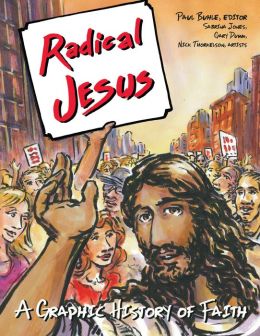 By Paul BuhleHerald Press By Paul BuhleHerald Press
|

Want to Know what CCDS has
been doing...Check it Out!
|
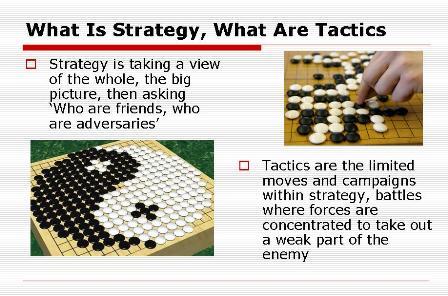 Keep On Keepin' On Keep On Keepin' OnWhy Socialists Run in Elections, Strategy and Tactics Slide Slow, Class and Privilege, the Green New Deal ...and other Short Posts on Tumblr by Carl Davidson
|

Edited by Carl Davidson Revolutionary Youth the the New Working Class: The Praxis Papers, the Port Authority Statement, the RYM Documents and other Lost Writings of SDS
Changemaker, 273pp, $22.50
For the full contents, click the link and view 'Preview' under the cover graphic.
|
|
By Randy Shannon, CCDS

"Everyone has the right to work, to free of employment, to just and favorable conditions of work and to protection against unemployment."
- United Nations Universal Declaration of Human Rights, December 10, 1948
I. Introduction
The "Great Recession" that began in 2007 has caused the greatest percent of job losses since the Great Depression of 1929. This crisis is the end of an era of unrestrained 'neo-liberal' capitalism that became public policy during the Reagan administration. The crisis marks a new level of instability with the growth of a global financial elite that targeted US workers and our trade unions after World War II.
|
|
Order Our
Full Employment Booklets
 |
...In a new and updated 2nd Edition
Capitalism may well collapse under its own excesses, but what would one propose to replace it? Margaret Thatcher's mantra was TINA...There Is No Alternative. David Schweickart's vision of "Economic Democracy" proposes a serious alternative. Even more fundamentally, it opens the door to thinking about alternatives. His may or may not turn out to be the definitive "successor system," but he is a leader in breaking out of the box. |
 by Paul KrehbielAutumn Leaf Press, $25.64
by Paul KrehbielAutumn Leaf Press, $25.64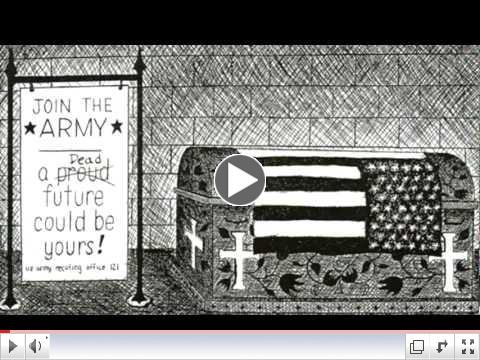 | | Shades of Justice Video: Bringing Down a President, Ending a War |
|
 By Giuseppe Fiori
Verso, 30 pages
|

Essays on Mondragon, Marx, Gramsci
and the Green and Solidarity Economies |
Solidarity Economy:What It's All About

Edited by Jenna Allard, Carl Davidson and Julie Matthaei
Buy it here...
|

- Foreword by Susan Brownmiller
- Preface by Ken Wachsberger
$37.50 + $6 shipping
|
|
Discussion Documents for a Militant Movement
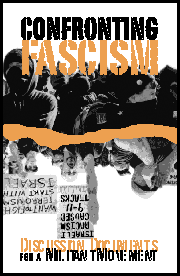
By Don Hamerquist
|
|
|
|
An Invitation to CCDSers and Friends...
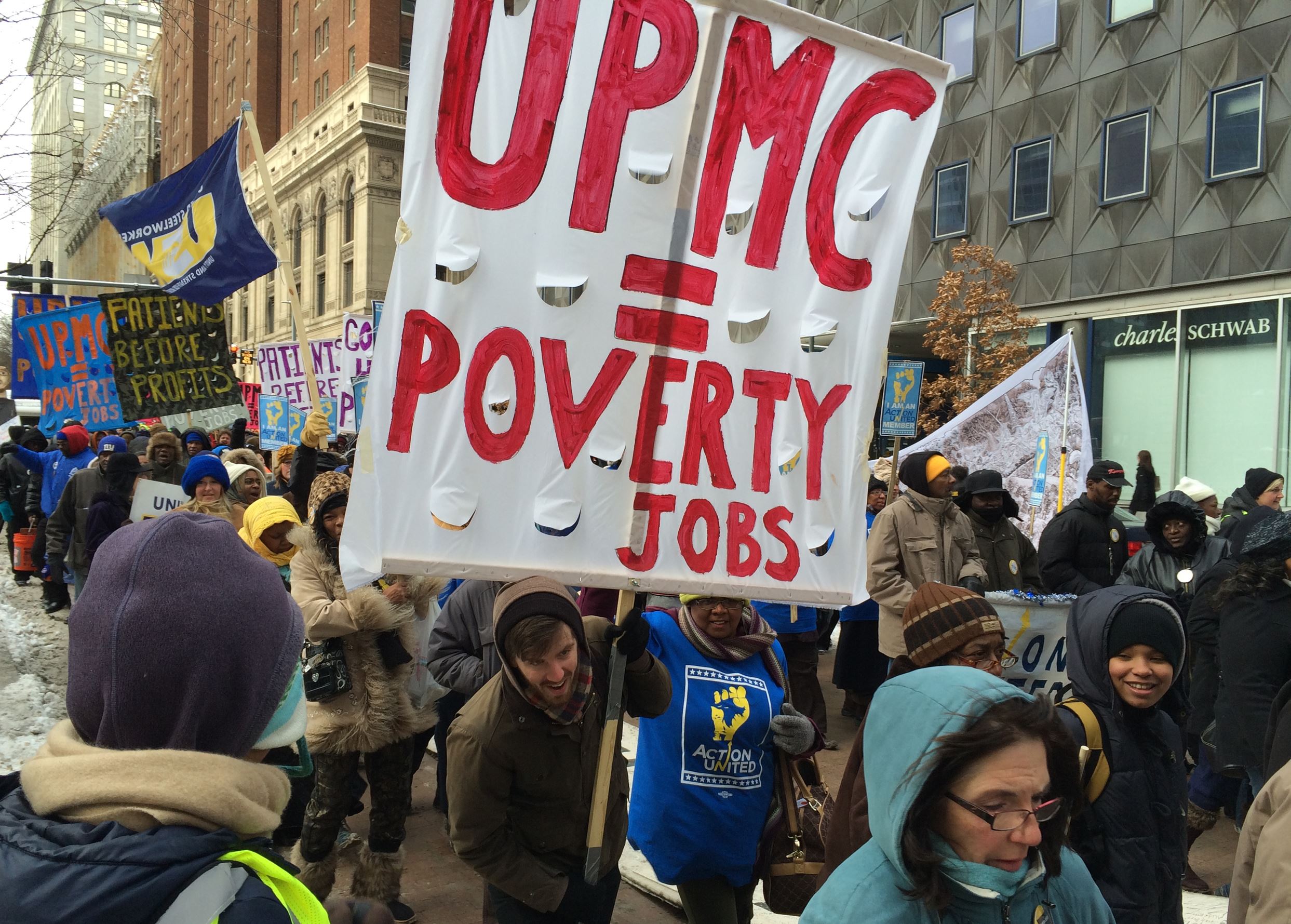 Turmoil and Resistance, both at Home and Abroad
We're the Committees of Correspondence for Democracy and Socialism...Do you have friends who should see this? Pass it on...Do you have a blog of your own? Others you love to read every day? Well, this is a place where you can share access to them with the rest of your comrades. Just pick your greatest hits for the week and send them to us at carld717@gmail.com! Most of all, it's urgent that you oppose war on Iran, defend voter rights, plan for 2014 races now, oppose austerity, support the 'Moral Mondays' in North Carolina, the Congressional Progressive Caucus' 'Back to Work Budget'! We're doing more than ever, and have big plans. So pay your dues, make a donation and become a sustainer. Do it Now! Check the link at the bottom... |
Six Ways America is Like a Third-World Country

The U.S. imprisons a higher percentage of our population than countries like Russia, China and Iran. Our society lags behind the rest of the developed world in education, health care, violence and more
By Sean McElwee
Progressive America Rising via Rolling Stone
MARCH 05, 2014 - Although the U.S. is one of the richest societies in history, it still lags behind other developed nations in many important indicators of human development - key factors like how we educate our children, how we treat our prisoners, how we take care of the sick and more. In some instances, the U.S.'s performance is downright abysmal, far below foreign countries that are snidely looked-down-upon as "third world." Here are six of the most egregious examples that show how far we still have to go:
1. Criminal Justice
We all know the U.S. criminal justice system is flawed, but few are likely aware of just how bad it is compared to the rest of the world. The International Center for Prison Studies estimates that America imprisons 716 people per 100,000 citizens (of any age). That's significantly worse than Russia (484 prisoners per 100,000 citizens), China (121) and Iran (284). The only country that incarcerates a higher percentage of its population than we do is North Korea. The U.S. is also the only developed country that executes prisoners - and our death penalty has a serious race problem: 42 percent of those on death row are black, compared to less than 15 percent of the overall population.
Over two and a half million American children have a parent behind bars. A whopping 60 percent of those incarcerated in U.S. prisons are non-violent offenders, many of them in prison for drug charges (overwhelmingly African-Americans). Even while our crime rate has fallen, our incarcerated population has climbed. As of 2011, an estimated 217,000 American prisoners were raped each year - that's 600 new victims every day, a truly horrifying number. In 2010, the Department of Justice released a report about abuse in juvenile detention centers. The report found that 12.1 percent of all youth held in juvenile detention reported sexual violence; youth held for between seven and 12 months had a victimization rate of 14.2 percent.
2. Gun Violence
The U.S. leads the developed world in firearm-related murders, and the difference isn't a slight gap - more like a chasm. According to United Nations data, the U.S. has 20 times more murders than the developed world average. ...(Click title for more)
|
The Dominant Economic Model of the 21st Century: Pain and Suffering for - Almost - All
Photo Credit: Wikimedia Commons/Michael Raphael/FEMA Photo Library
The free market norm assumes a frictionless exchange maximizing everyone's well-being, but mass incarceration and a bloated military prove otherwise.
By Chris Hedges
This article originally appeared on TruthDig.com, and is reprinted here with their permission.
March 3, 2014 - OXFORD, England-The morning after my Feb. 20 debate at the Oxford Union, I walked from my hotel along Oxford's narrow cobblestone streets, past its storied colleges with resplendent lawns and Gothic stone spires, to meet Avner Offer, an economic historian and Chichele Professor Emeritus of Economic History.
Offer, the author of " The Challenge of Affluence: Self-Control and Well-Being in the United States and Britain Since 1950," for 25 years has explored the cavernous gap between our economic and social reality and our ruling economic ideology. Neoclassical economics, he says, is a "just-world theory," one that posits that not only do good people get what they deserve but those who suffer deserve to suffer. He says this model is "a warrant for inflicting pain." If we continue down a path of mounting scarcities, along with economic stagnation or decline, this neoclassical model is ominous. It could be used to justify repression in an effort to sustain a vision that does not correspond to the real world.
Offer, who has studied the rationing systems set up in countries that took part in World War I, suggests we examine how past societies coped successfully with scarcity. In an age of scarcity it would be imperative to set up new, more egalitarian models of distribution, he says. Clinging to the old neoclassical model could, he argues, erode and perhaps destroy social cohesion and require the state to engage in greater forms of coercion.
"The basic conventions of public discourse are those of the Enlightenment, in which the use of reason [enabled] us to achieve human objectives," Offer said as we sat amid piles of books in his cluttered office. "Reason should be tempered by reality, by the facts. So underlining this is a notion of science that confronts reality and is revised by reference to reality. This is the model for how we talk. It is the model for the things we assume. But the reality that has emerged around us has not come out of this process. So our basic conventions only serve to justify existing relationships, structures and hierarchies. Plausible arguments are made for principles that are incompatible with each other."
Offer cited a concept from social psychology called the just-world theory. "A just-world theory posits that the world is just. People get what they deserve. If you believe that the world is fair you explain or rationalize away injustice, usually by blaming the victim....(Click title for more)
|
|
 By Chris Butters By Chris Butters
People's World
March 5 2014 - NEW YORK - An overflow crowd in the Winston Unity Hall here heard Angela Davis, the iconic scholar, prison reform activist, socialist and former political prisoner, speak on the theme, "Defeating Racism - Central to Defeating the Right Danger."
The Feb. 26 event, the annual celebration in New York of African American culture and struggles, featured a mix of working-class culture, educational presentations, and progressive politics.
If this year the country saw much racist violence, the event saw people gathered to draw strength from the gathering so they could leave better equipped to continue the struggle not just in the streets but in the 2014 elections.
CPUSA Executive Vice Chair Jarvis Tyner hailed Davis "whose courage is legendary, who stood up to the most powerful people in the world. In coming back to prove her innocence, she expressed confidence in you, the people, that the truth will set us free." He urged everyone to see the recent movie Free Angela.
Tyner placed Davis' remarks in the context of an ultra right seeking to roll back the gains of the civil rights movement, the women's movement and the New Deal. Speaking to many generations in the room - those radicalized by her defense case, those who had worked on her campaigns for Vice President on the CPUSA ticket, and a new generation cutting its teeth on today's struggles, Tyner said, "Every every generation has to pick up the torch of struggle and carry it. That is our responsibility, why we are all here."
Davis congratulated those who had participated in the recent demonstrations commemorating the second anniversary of the killing of Trayvon Martin. "Black history shows resistance is not only possible but necessary," she said.
Davis punctured the myths that the election of Obama ushered in a "post-racial society," or that racism in America ended in 1965 when legal institutions of racism were dismantled. "The very presence of a black president has unleashed instances of old and new manifestations of racism." In addition to "systemic racist violence," "the structures of racism remain embedded in the education, health care and correctional systems," she said.
Decrying the "criminalization of blackness," Davis said, "the U.S. has become a prison nation," with the greatest proportion of its population being people of color. She called for "a new abolitionist movement, taking up the issues not just of mass incarceration, but the issues of housing, education, health care that have loomed over this country since slavery. " ...(Click title for more)
|
Over a hundred protesters marched in bitter cold on March 5th from Times Square to the nearby New York Times building to deliver a letter demanding honest and undistorted coverage of recent events in Venezuela. The letter was delivered by a delegation that included members of the Bolivarian Circle in NY and a Vice President of SEIU Local 1199, Steve Kramer. Among the many organizations that signed the letter was CCDS and the Left Labor Project.
By the Committees of Correspondence
for Democracy and Socialism
March 5, 2014 - Sensational headlines in the U.S. of opposition protests in Venezuela amid escalating violence have dominated the coverage of the corporate mainstream media over the past three weeks. This is part of a multipronged strategy by the U.S. government and multinational corporations to destabilize Venezuela politically and economically and pave the way for another coup attempt as was the case in 2002 during the Bush administration. These same policies have continued with the Obama Administration despite denials that it is backing the opposition. Such denials lack credibility given the results of extensive investigative reporting on U. S. funding for and training of leaders of the Venezuelan opposition and recent leaks of extensive communication between U.S. officials and right wing opposition leader, Leopoldo Lopez.
None of the mainstream media narrative accurately reflects the complex reality of Venezuela. U.S. news and analyses are routinely distorted, manipulated, and even manufactured to support the corporate media's narrative which is that student-led protests have been violently repressed amidst severe government repression of speech and press in Venezuela. Anti-government protests that appear to engulf the country are in reality mainly in the wealthiest neighborhoods of Caracas.
According to a report by Mark Weisbot of the Guardian, there have been eight confirmed deaths but no evidence that they were caused by a repressive government crack-down. Actually a number of security officers have been arrested for crimes. And there has been random protestor-on-protestor violence, a far cry from a government policy of brutal force to squash dissent.
The mainstream media's narrative also includes sensational distortions and misinformation regarding Venezuela's economic situation. The economy is portrayed as being on the verge of collapse, due to bad policies and mismanagement of the Venezuelan government. The fact is that the government of President Maduro has continued the humanitarian "Bolivarian" policies of his predecessor, Hugo Chavez, whose untimely death one year ago, is commemorated today, March 5th. Their government policies have reduced poverty dramatically and channeled the country's resources to improve employment, education, health care and housing for the majority of Venezuelans.
Maduro's government has won two national elections within the last year including 75 percent of municipal government offices two months ago. It is a legitimate, democratically-elected constitutional government. The policy of the U.S. government is an attack on democracy and constitutional government in Venezuela.
The Venezuelan government faces many political and economic challenges. The CCDS stands in solidarity with the heroic workers and poor of Venezuela as they tackle these challenges.
The CCDS joins with peace and justice organizations in demanding:
An end to all U.S. government support, overt and covert, for the Venezuelan opposition as it constitutes an unacceptable and immoral intervention in the politics and economy of a sovereign nation
An end to all covert efforts to sabotage Venezuela's economy and cause suffering among the Venezuelan people.
(Thanks to Jonathan Nack in preparing this statement)
|
Bernie Sanders: 'I Am Prepared to Run
for President of the United States'

By John Nichols
The Nation via PDAmerica.org
Bernie Sanders says he is "prepared to run for president of the United States." That's not a formal announcement. A lot can change between now and 2016, and the populist senator from Vermont bristles at the whole notion of a permanent campaign.
But Sanders has begun talking with savvy progressive political strategists, traveling to unexpected locations such as Alabama and entertaining the process questions that this most issue-focused member of the Senate has traditionally avoided.
In some senses, Sanders is the unlikeliest of prospects: an independent who caucuses with the Democrats in the Senate but has never joined the party, a democratic socialist in a country where many politicians fear the label "liberal," an outspoken critic of the economic, environmental and social status quo who rips "the ruling class" and calls out the Koch brothers by name. Yet, he has served as the mayor of his state's largest city, beaten a Republican incumbent for the US House, won and held a historically Republican Senate seat and served longer as an independent member of Congress than anyone else. And he says his political instincts tell him America is ready for a "political revolution."
In his first extended conversation about presidential politics, Sanders discussed with The Nation the economic and environmental concerns that have led him to consider a 2016 run; the difficult question of whether to run as a Democrat or an independent; his frustration with the narrow messaging of prominent Democrats, including Hillary Clinton; and his sense that political and media elites are missing the signs that America is headed toward a critical juncture where electoral expectations could be exploded.
John Nichols: Are you going to run for president in 2016?
Bernie Sanders: I don't wake up every morning, as some people here in Washington do and say, "You know, I really have to be president of the United States. I was born to be president of the United States." What I do wake up every morning feeling is that this country faces more serious problems than at any time since the Great Depression, and there is a horrendous lack of serious political discourse or ideas out there that can address these crises, and that somebody has got to represent the working-class and the middle-class of this country in standing up to the big-money interests who have so much power over the economic and political life of this country. So I am prepared to run for president of the United States. I don't believe that I am the only person out there who can fight this fight, but I am certainly prepared to look seriously at that race.
When you say you are "prepared to run," that can be read in two ways. One is to say you have the credentials, the prominence, the following to seek the office. The other is to say that you are making preparations for a run. How do you parse that?
If the question is, am I actively right now organizing and raising money and so forth for a campaign for president, I am not doing that. On the other hand, am I talking to people around the country? Yes, I am. Will I be doing some traveling around the country? Yes, I will be. But I think it's premature to be talking about (the specifics of) a campaign when we still have a 2014 congressional race in front of us.
I want to push back at some of what you are saying. Political insiders define presidential politics, and they are already hard at work, in both major parties and in the broader sense, to erect barriers to insurgent, dissident, populist campaigns. Don't progressives who come at the process slowly run the risk of finding that everything has been locked up by the time they get serious about running?
Obviously, if I run, both in terms of the positions that I'll be advocating, and the process itself, it will have to be a very unconventional campaign. I hear what you are saying, and I think there is truth in what you are saying. But, on the other hand, I think there is profound disgust among the American people for the conventional political process and the never-ending campaigns. If I run, my job is to help bring together the kind of coalition that can win-that can transform politics. We've got to bring together trade unionists and working families, our minority communities, environmentalists, young people, the women's community, the gay community, seniors, veterans, the people who in fact are the vast majority of the American population. We've got to create a progressive agenda and rally people around that agenda.
I think we've got a message that can resonate, that people want to hear, that people need to hear. Time is very important. But I don't think it makes sense-or that it is necessary-to start a campaign this early.
If and when you do start a full-fledged campaign, and if you want to run against conventional politics, how far do you go? Do you go to the point of running as an independent? That's a great challenge to conventional politics, but it is also one where we have seen some honorable, some capable people stumble.
That's an excellent question, and I haven't reached a conclusion on that yet. Clearly, there are things to be said on both sides of that important question. Number one: there is today more and more alienation from the Republican and Democratic parties than we have seen in the modern history of this country. In fact, most people now consider themselves to be "independent," whatever that may mean. And the number of people who identify as Democrats or Republicans is at a historically low point. In that sense, running outside the two-party system can be a positive politically.
On the other hand, given the nature of the political system, given the nature of media in America, it would be much more difficult to get adequate coverage from the mainstream media running outside of the two-party system. It would certainly be very hard if not impossible to get into debates. It would require building an entire political infrastructure outside of the two-party system: to get on the ballot, to do all the things that would be required for a serious campaign.
The question that you asked is extremely important, it requires a whole lot of discussion. It's one that I have not answered yet....(Click title for more)
|
The Stone That Brings Down Goliath? Richmond's Green Party Mayor & Eminent Domain  Mayor Gayle McLaughlin of Richmond, California, in front of a boarded-up house in Richmond, December 20, 2013. Many Richmond residents owe more money on their houses than their houses are worth, but McLaughlin's plan to use of eminent domain to prevent foreclosures has faced significant opposition. (Photo: Jim Wilson / The New York Times)
By Ellen Brown
Web of Debt via Truthout
March 4, 2014 - Mayor Gayle McLaughlin of Richmond, California, in front of a boarded-up house in Richmond, December 20, 2013. Many Richmond residents owe more money on their houses than their houses are worth, but McLaughlin's plan to use of eminent domain to prevent foreclosures has faced significant opposition. (Photo: Jim Wilson / The New York Times)Mayor Gayle McLaughlin of Richmond, California, in front of a boarded-up house in Richmond, December 20, 2013. Many Richmond residents owe more money on their houses than their houses are worth, but McLaughlin's plan to use of eminent domain to prevent foreclosures has faced significant opposition. (Photo: Jim Wilson / The New York Times)
In a nearly $13 billion settlement with the US Justice Department in November 2013, JPMorganChase admitted that it, along with every other large US bank, had engaged in mortgage fraud as a routine business practice, sowing the seeds of the mortgage meltdown. JPMorgan and other megabanks have now been caught in over a dozen major frauds, including LIBOR-rigging and bid-rigging; yet no prominent banker has gone to jail. Meanwhile, nearly a quarter of all mortgages nationally remain underwater (meaning the balance owed exceeds the current value of the home), sapping homeowners' budgets, the housing market and the economy. Since the banks, the courts and the federal government have failed to give adequate relief to homeowners, some cities are taking matters into their own hands.
Gayle McLaughlin, the bold mayor of Richmond, California, has gone where no woman dared go before, threatening to take underwater mortgages by eminent domain from Wall Street banks and renegotiate them on behalf of beleaguered homeowners. A member of the Green Party, which takes no corporate campaign money, she proved her mettle standing up to Chevron, which dominates the Richmond landscape. But the banks have signaled that if Richmond or another city tries the eminent domain gambit, they will rush to court seeking an injunction. Their grounds: an unconstitutional taking of private property and breach of contract.
How to refute those charges? There is a way; but to understand it, you first need to grasp the massive fraud perpetrated on homeowners. It is how you were duped into paying more than your house was worth; why you should not just turn in your keys or short-sell your underwater property away; why you should urge Congress not to legalize the MERS scheme; and why you should insist that your local government help you acquire title to your home at a fair price if the banks won't. That is exactly what Richmond and other city councils are attempting to do through the tool of eminent domain.
The Securitization Fraud That Collapsed the Housing Market
One settlement after another has now been reached with investors and government agencies for the sale of "faulty mortgage bonds," including a suit brought by Fannie and Freddie that settled in October 2013 for $5.1 billion. "Faulty" is a euphemism for "fraudulent." It means that mortgages subject to securitization have "clouded" or "defective" titles. And that means the banks and real estate trusts claiming title as owners or nominees don't actually have title - or have standing to enjoin the city from proceeding with eminent domain. They can't claim an unconstitutional taking of property because they can't prove they own the property, and they can't claim breach of contract because they weren't the real parties in interest to the mortgages (the parties putting up the money).
"Securitization" involves bundling mortgages into a pool, selling them to a non-bank vehicle called a "real estate trust," and then selling "securities" (bonds) to investors (called "mortgage-backed securities" or "collateralized debt obligations"). By 2007, 75% of all mortgage originations were securitized. According to investment banker and financial analyst Christopher Whalen, the purpose of securitization was to allow banks to avoid capitalization requirements, enabling them to borrow at unregulated levels.
Since the real estate trusts were "off-balance sheet," they did not count in the banks' capital requirements. But under applicable accounting rules, that was true only if they were "true sales." According to Whalen, "most of the securitizations done by banks over the past two decades were in fact secured borrowings, not true sales, and thus potential frauds on insured depositories." He concludes, "bank abuses of non-bank vehicles to pretend to sell assets and thereby lower required capital levels was a major cause of the subprime financial crisis."
In 1997, the FDIC gave the banks a pass on these disguised borrowings by granting them "safe harbor" status. This proved to be a colossal mistake, which led to the implosion of the housing market and the economy at large. Safe harbor status was finally withdrawn in 2011; but in the meantime, "financings" were disguised as "true sales," permitting banks to grossly over-borrow and over-leverage. Over-leveraging allowed credit to be pumped up to bubble levels, driving up home prices. When the bubble collapsed, homeowners had to pick up the tab by paying on mortgages that far exceeded the market value of their homes....(Click title for more)
|
By Anna Lekas Miller
Truthout | Interview
What would an Arab-American romantic comedy look like? Look no further than Detroit Unleaded, the story of a first-generation Lebanese-American courtship that revolves around a gas station in Detroit. While in many ways Sami and Najla's relationship resembles the typical boy-meets-girl story, Detroit Unleaded also explores how the dynamics of the closely knit Arab-American community shape the story of their relationship and the community around them.
Although Detroit Unleaded began as a short film on the Arab-American community in Detroit, popular demand and community support made it become a feature film. On Saturday, it was released to the public on iTunes, On Demand and DVD.
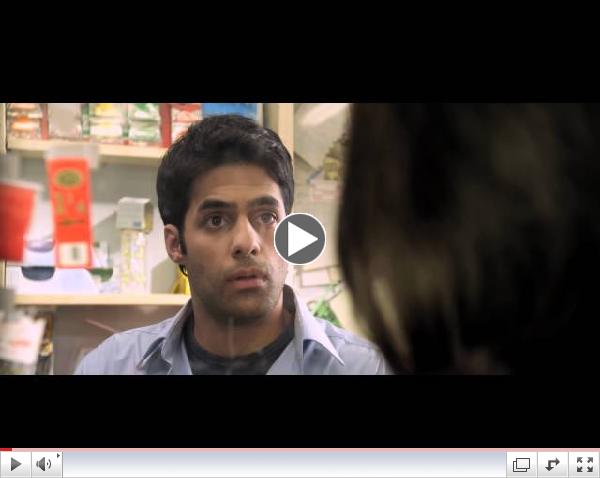 | | DETROIT UNLEADED Trailer | Festival 2012 |
I got a chance to interview the film's writer, director and producer, Rola Nashef, on the Arab-American community in Detroit, Arab-American identity and the politics of challenging stereotypes of Arabs and Arab-Americans in the media through romantic comedy.
Anna Lekas Miller for Truthout: What inspired you to make this film?
Rola Nashef: I took a break from school and moved from Lansing to Detroit to work for ACCESS, the Arab-American Community Center. It was the first time I had lived in such a concentrated Arab-American community. It was also the first time I saw bulletproof glass in gas stations. I kept seeing these repeat images of Arab guys behind the glass. All of our Arab guy friends seemed to have stories about the gas station. They either worked at a gas station or owned a gas station, and it seemed like a rite of passage for so many Arab men.
I ended up going to film school and this story about a gas station remained stuck in my head. I had no idea what it was, but I felt like the gas station operated as a turnstile where people came in and out of each other's lives, but the bulletproof glass was a murky barrier that comes between people. I would go to these gas stations to visit my friends and kept seeing these Arab clerks behind the counter. It is a stressful job - as anyone who has ever worked in retail can imagine, but it is also very mundane at times. But what I really observed were a lot of friendships that formed between these Arab clerks and the customers they served - predominantly African-American customers, but also just Detroiters. I knew why the glass existed. I understand that it is because of a history of violence on both sides. But I was more interested in the friendships forged in spite of these barriers.
Also, the gas station is at the center of so many Arab-American families and communities. It is our means and represents upward mobility to the Lebanese-American community, here in Detroit. It is where members of families spend 12 or 14 hours a day, particularly Arab youth. Since it is often a family business, you are kind of forced to be there, but still people create their own world. ...(Click title for more)
|
|
By Soraya Chemaly
Huffington Post
On September 17, 2013, the National Network to End Domestic Violence took a random snapshot of requests coming in to domestic violence shelters and resources across the country. On that day, 66,581 requests for help were made by people living with abuse. There were 20,000 calls made to hotlines -- that's one every 14 minutes. Nearly TEN THOUSAND (9,641) requests for housing, transportation, legal assistance or childcare were unmet (5,778 were for housing alone).
The study found that most of those looking for help and were turned away -- 60% of the total -- were leaving their abusers. Today, they released the findings of their study, which also documented three incidents that happened on that day. In one instance, a woman escaped after her husband severely assaulted her and threatened her with a knife. In another, a woman's son tried to protect her from her abusive husband. In a third, a man stabbed and raped a woman in front of his friends. It's worth repeating that, every day, three women are killed by spouses in the U.S.. This isn't happening in the mythical "Over There," but in our neighborhoods, communities and schools, to people in our religious communities and workplaces.
When I speak publicly about violence against women, this comparison, which you may have seen before, is the one that stops people in their tracks because while we can, culturally, understand the horror of war and the sacrifices of soldiers, we are disinclined to think of the terrorism of everyday domestic violence in our midst: The number of U.S. troops killed in Afghanistan and Iraq is 6,614. The number of women killed in the same period as the result of domestic violence in the U.S.: 11,766. That number of women killed is only slightly higher than the number of requests made, mainly from women, actively seeking help avoiding a situation where they night end up being killed EVERY DAY... and being turned down.
What happens when people are turned away?
The study did not track this, but others have. When people leave, 27% become homeless and 11% report that their families end up living in cars. Sixty-three percent of homeless women report domestic abuse, and when they have children, that number goes up 92%. Domestic abuse is cited by 50% of U.S. cities as the primary cause of homelessness.
Other studies reveal that when people leave their abusers about 60% of them return. This happens for a whole host of reasons beyond individual psychological makeup and personal interactions between two people. Leaving is not a decision taken lightly by women, who make up the bulk of domestic violence victims, especially those with children. Fully 30% of women who are murdered are killed by intimate partners (versus 5.3% of men). Of the total number of homicides resulting from intimate partner violence, roughly 75% of those killed are killed as they tried to leave or after they had left. Interpersonal violence starts when people are children and becomes part of their lives as they age in a cycle that replicates itself.
The facile response "Why doesn't she just leave him?" ignores not only the real risk of death, but the cultural, social, economic and structural environment that people function in and is fundamentally based on the belief that the person being assaulted is in control of the situation or to blame for the violence. This question inverts the reality of domestic violence: "A pattern of behavior in an intimate or dating relationship that includes a range of abusive tactics which establish and maintain coercion and control of one partner over the other."...(Click title for more)
|
Start 2014 With a Red Resolution...
Become a CCDS member today!
 The time is long past for 'Lone Rangers'. Being a socialist by your self is no fun and doesn't help much. Join CCDS today--$36 regular, $48 household and $18 youth. The time is long past for 'Lone Rangers'. Being a socialist by your self is no fun and doesn't help much. Join CCDS today--$36 regular, $48 household and $18 youth.
Better yet, beome a sustainer at $20 per month, and we'll send you a copy of Jack O'Dell's new book, 'Climbing Jacobs Ladder,' drawing on the lessons of the movement in the South in the 1950s and 1960s.
Solidarity, Carl Davidson, CCDS
|
|
|